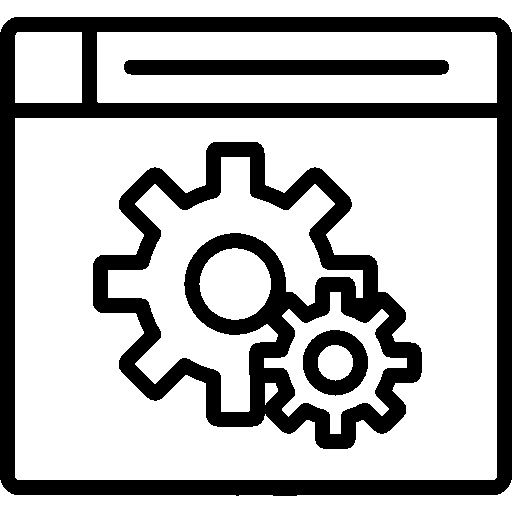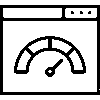- Products
- Platform
- Solutions
- Customers
- Support
- Pricing
 Website & Mobile & E-commerce
Website & Mobile & E-commerce
 CRM
CRM
 Operation & ERP
Operation & ERP
 Productivity
Productivity
 Support
Support
 Community
Community
 Learn
Learn
Application Support Point

Manage all business processes of your events.
- Version History
- Application Features
- User Manual
- FAQ
- Community
Definition
Events app is an application that allows planning, organizing and managing various events such as conferences, seminars, meetings, training sessions, social events and more. This application includes creating event details, capturing registrations, preparing programs and collecting post-event feedback.
Aim
The purpose of the Events app is to enable more efficient and effective planning and management of events. This is designed to increase attendee satisfaction, facilitate participation and reduce the workload of organizers.
Key Benefits
- The events app offers tools that make planning and managing events easier, so organizers spend less time and effort.
- It facilitates the creation and sharing of event programs and calendars so that attendees can easily access event details.
- It offers the ability to collect and analyze post-event feedback, providing valuable information for improving future events.
Entrance
This is the home screen of the Events app.

Events
Events are divided into four categories: Open Registrations, Closed Registrations, Cancelled Registrations, and All Registrations.
Open Records

On the Open Registrations screen, Event Code, Event Name, Responsible, Member/Participant, Registration Date, Update Date, Start Date, End Date information is listed in a table.
Cancelled Registrations

On the Canceled Registrations screen, Event Code, Event Name, Responsible, Member/Participant, Registration Date, Update Date, Start Date, End Date information is listed in a table.
All Records

On the All Records screen, Event Code, Event Name, Responsible, Member/Participant, Registration Date, Update Date, Start Date, End Date information is listed in a table.
Personal Settings
Kişisel Ayarlar, kullanıcının bir uygulama üzerindeki deneyimini özelleştirmesine olanak tanır. Kullanıcının kendi tercihlerine göre çeşitli ayarları yapılandırabilmesini sağlar.

Etkinlikler uygulamasını özelleştirmek için Listeleme Ayarları ve Sütunlar ayarları yapılır.
Listeleme Ayarları
Detay Gösterim Yöntemi; Sekme veya Popup seçilir. Etkinlik kartı seçime göre açılır
Varsayılan Takvim Filtresi; Günlük, Haftalık, Aylık, Senelik veya Tümü olarak seçilir. Etkinlik listesinin seçilen takvim filtresine göre listelenmesini sağlar.
Varsayılan Tarih Filtresi; Kayıt Tarihi, Güncelleme Tarihi veya Bitiş Tarihi seçilir. Etkinlik listesinin seçilen tarih filtresine göre listelenmesini sağlar
Sayfalamada Kayıt Sayısı; 25, 50, 100, 250 veya 500 olarak seçilir.
Sütunlar
Etkinlik liste sayfasında gösterilecek tablo başlıklarının seçimi yapılır.
Etkinlik Kodu
Etkinlik Adı
Sorumlu
Üye/Katılımcı
Aşama / Durum
Kayıt Tarihi
Güncelleme Tarihi
Başlama Tarihi
Bitiş Tarihi
Yukarıda listelenen sütun maddeleri tercihe göre seçilerek kaydedilir.
Filtering Settings
Filtreleme ayarları, bir sistemde veya uygulamada belirli kriterlere göre verileri sınıflandırmak için kullanılır. Bu ayarlar, kullanıcıya yalnızca ilgili veya uygun içerikleri sunmaya yardımcı olur.
 Filtreleme ayarları ekranında Tarih Aralığı, Aşama, Kategori alanları seçilerek filtreleme yapılır.
Filtreleme ayarları ekranında Tarih Aralığı, Aşama, Kategori alanları seçilerek filtreleme yapılır.
General Information
This is the screen where the event record is defined.

On the General Information screen, enter the Event Name, Event Code, Project Code, Category, Event Type, Event Date, Budget Amount, Event Location, Event Information and click the save button.
Event Summary
This is the screen where the event summary screen is displayed.

The Summary screen displays General Information, Event Members, Parameters, and Detailed Information.
Edit
This is the screen where General Information is edited.

On the General Information screen, Event Name, Event Code, Project Code, Category, Event Type, Event Date, Budget Amount, Event Location, Event Room, Event information is edited.
Parameters
This is the screen where parameters are added to the activity.

In the Parameters screen, the definitions entered in the Settings - Parameters menu are listed and filled.
This area can be used for data that is desired to be kept during events.
Text Contents
This is the screen where text content is entered.

Definitions made via the Settings - Event Content Definitions menu are listed and filled.
Event Members
This is the screen where Event Members are displayed.

Order on the event members screen Name, Surname, Related, Responsible, The Role Definition information is updated. The employee is added by clicking the Add Employee button.
Participants
This is the screen where the participants are displayed.

On the Participants screen, Order, Participant Name, Record Date information is listed. Personnel can be added by clicking the Add Personnel button, and a customer can be added by clicking the Add Customer button.
Guests
This is the screen where the guests are displayed.

On the guest screen, the queue is CRMI, Guest Name information is included. Staff can be added by clicking the Add button from Staff, and customers can be added by clicking the Add button from Customers.
Lists
This is the screen where the lists are displayed.

On the Lists screen, select the List type. Click the Add List button to add a list.
Statistics
This is the screen where personnel statistics are displayed.

Rank on the staff statistics screen, Personnel Information, Number of Activities, Activity Duration, Contains Approval Percentage information.
Linked Files
This is the screen where the connected files are displayed.

The File Information and Parameters information are available on the connected files screen. A file can be added by pressing the Add New File button, and multiple files can be added by pressing the Add Multiple Files button.
Add New File

The file is selected and a sequence number is given.
Add Multiple Files

The file is added by selecting the file.
General Settings
Settings are customized by selecting the settings to be used according to the company's preference from the General Settings menu.

The color of the application can be adjusted according to the company's preference.
If the company has more than one company, the Events application can be separated according to the companies.
Allows role definition for event members using role definition
If the Parse the application according to my companies feature is inactive, it ensures that all records are saved to the selected company, which is the default.
If the company has more than one branch, it can separate the events application according to the branches.
The stage in which the events are located is determined using the Stage Feature.
By using the Status Feature, the stages are detailed. In this way, the process is managed more easily.
Event details can be given using the Text Content feature.
Using this activity in the travel application, you can enter travel records for events.
Cost analysis of activities is easily done using the budget feature.
You can connect the project to the event using the Project Code.
Default Sorting can be selected as Event Name, Event Code, Category, Recording Date.
Stage Definitions
Definitions are created for activity stages. These stage definitions make it easier to track the activity by showing which stage it is in.

The Phase Definitions screen lists the Color, Phase Name, and properties.
A stage is added by pressing the Add New Stage button.

To add a stage definition, Stage Information and Stage Options information is entered. After all operations are completed, the Save button is pressed to save. The stage is edited by clicking on the added stage.
-General Information

In the General Information screen, Stage Name, Description, Order and Stage Options are edited.
-Phase Color

A color representing the stage is selected. The color representing the stage allows records to be easily separated in the lists according to their stages and status.
-User Authorizations

The user sees the records at this stage, receives notifications, can make stage changes, and is given authorizations that are selected according to preference.
Authorized Users

The authorized users' Name and Surname information is listed on the authorized users screen. By clicking on the authorized user, stage authorizations are edited.
-Editing Stage Authorizations

Authorized users are given authority at each stage to edit stage authorizations. After all operations are completed, they are saved by pressing the Save button.
Status Definitions
Status definitions can be created under the stages.

It is easy to see what status the activity stages are in. Adjustments can be made to the status.
A status is added by pressing the Add New Status button.

To add a status, the General Information page opens. The new status is defined by adding Stage, Status Title, Description, and Sequence information. The status is edited by clicking on the added status.
-General Information

Stage, Status Title, Description, and Order information are edited on the general information screen.
-Status Color

A color representing the status is selected. The color representing the status allows records to be easily separated in the lists according to their stages and statuses.
-User Authorizations

The user can see records in this status , receive notifications, and change the status. These permissions are given selectively according to preference.
Authorized Users

The authorized users' Name and Surname information is listed on the authorized users screen. By clicking on the authorized user, stage authorizations are edited.
-Editing Status Authorizations

Authorized users are given the authority to edit the status permissions in each case. After all operations are completed, they are saved by pressing the Save button.
Role Descriptions
This is the screen where role definitions are displayed.

The Role definitions screen includes Order, Role Definition information. A Role definition is added by clicking the Add New button.

To add a Role Definition, Role Definition and Order information is entered.
Event Rooms
This is the screen where the Activity Rooms are displayed.

On the Event Rooms screen, the Order, Name, Capacity, Status information is listed in a table. An Event room is added by pressing the Add New button.

To add an Event Room, enter the Title, Description, Capacity, Status, and Order information.
Event Categories
This is the screen where event categories are displayed.

The Events categories screen includes Order, Category information. A category is added by pressing the Add New Category button.

To add a new category, enter the Category Name and Order information.
Event Types
This is the screen where activity types are displayed.

On the Event types screen, Order and Event Type information is added. An event type is added by clicking the Add New Event button.

To add an event type, enter the Event Type Name and Order information.
Event Content Definitions
This is the screen where event content definitions are displayed.

On the Event Content Definitions screen, the Order, Contents, Keyword, Data Type information is included. Content definition is added by clicking the Add New button.

To add a content definition, enter the Definition, Key, Content Type, and Order information.
Image Size Settings
This is the screen where the image size is adjusted.

There are three types of image sizes: Quote Image, Medium Image, Large Image. Image sizes are adjusted according to preference.
Parameters
This is the screen where the event parameters are displayed.

On the Event Parameters screen, No, Parameter Name, Keyword, Data Type information is listed in a table.
Parameter information is entered by pressing the Add New button.

To add a parameter, enter the Parameter Name, Keyword, Sequence Data Type (data type is divided into 6 items).
Data Type Full-Line Text, Multi-Line Text, Multiple Choice Text (radio), Checkbox, Drop-Down Menu (combo), Location information is entered. After all operations are completed, it is saved by pressing the Save button.
Calendar Settings
This is the screen where calendar settings are made.

Calendar integration available.
"Add to Calendar" may be selected.
Automatic Numbering
Automatic numbering ensures that events are automatically assigned to each new record.

Fill in the Prefix and Suffix fields as desired or leave them blank.
Give a starting value to the Auto-Increment Number field. For example, if you give 1000, the following numbers will go as 1000, 1001, 1002...
When a value is entered, a preview is displayed on the right for information purposes.
Authorized Users
On the Authorized Users screen, users are given the required authorizations and saved.

Questions
Ask questions and get answers from other Entranet users.

















